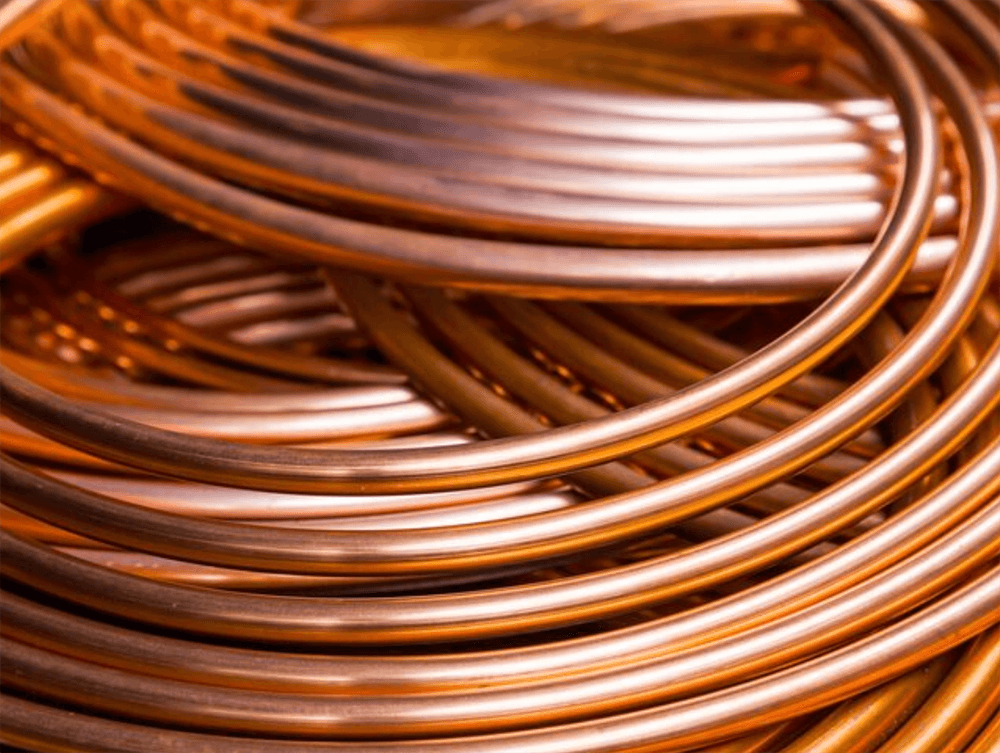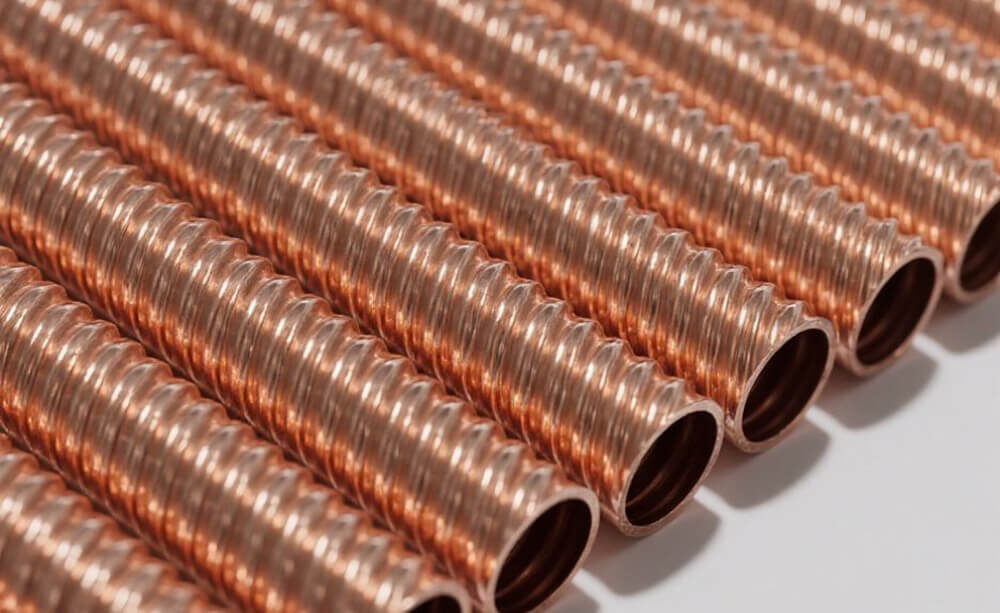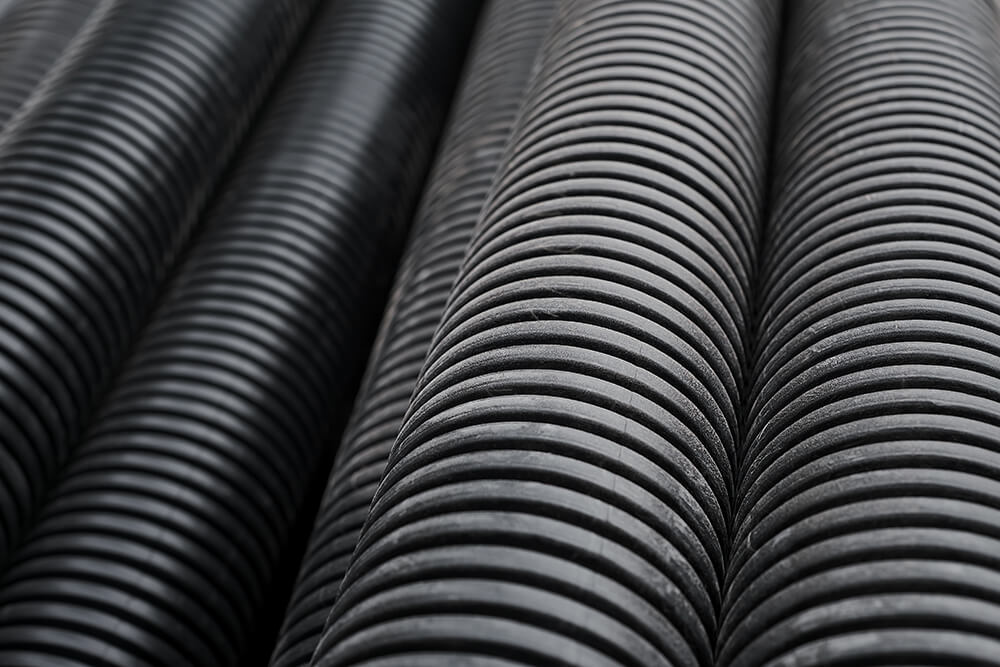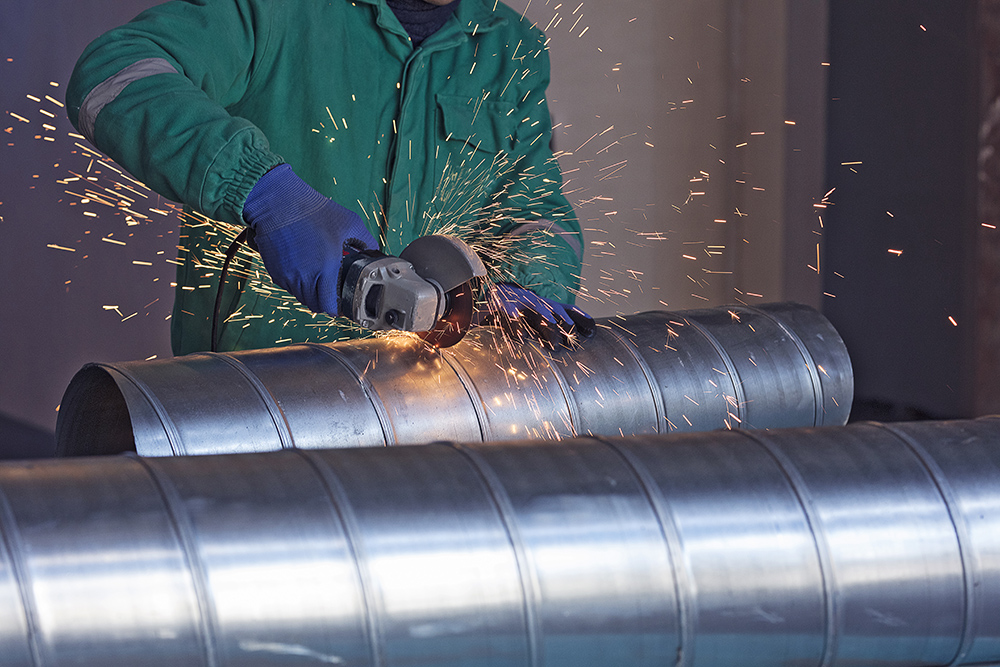The thermal management system for new energy vehicles has the following specific requirements for the performance of finned copper tubes:
High thermal conductivity
Components such as batteries and motors in new energy vehicles generate a large amount of heat during operation, which needs to be dissipated in a timely manner to maintain their normal operating temperature. As a key component of heat exchange, finned copper tubes need to have good thermal conductivity to quickly transfer heat from the heating components to the cooling medium, ensuring the efficient operation of the thermal management system.
Good corrosion resistance: The coolant in thermal management systems usually contains various additives that may have a corrosive effect on metal materials. Finned copper tubes need to remain stable in this complex chemical environment and have good corrosion resistance to prevent leakage, blockage, and other issues caused by corrosion, ensuring the reliability and service life of thermal management systems.
High precision dimensions: The spatial layout of the thermal management system for new energy vehicles is compact, requiring high dimensional accuracy of components. The size of finned copper tubes needs to be precisely controlled to ensure good fit with other components, achieving efficient heat exchange and compact system integration.
Optimized fin structure: The shape, size, and arrangement of fins directly affect the heat dissipation effect. In order to improve heat dissipation efficiency, the fin structure of finned copper tubes needs to be optimized to increase the heat dissipation area, promote the flow of air or coolant, and improve the heat exchange coefficient.
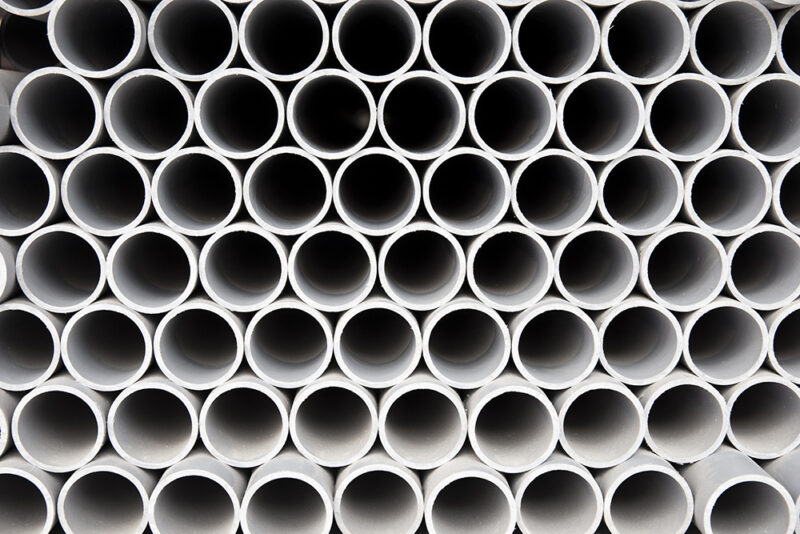
A certain ability to withstand pressure
During the operation of the thermal management system, finned copper tubes may be subjected to certain pressures, such as the pressure of coolant, vibrations during vehicle operation, etc. Therefore, finned copper tubes need to have a certain degree of compressive strength to prevent deformation, cracking, and other problems caused by pressure.
Good surface quality: The surface quality of finned copper tubes has a significant impact on their heat dissipation performance and corrosion resistance. The surface should be smooth and defect free to reduce the flow resistance of air or coolant, improve heat exchange efficiency, and prevent corrosion and scaling problems caused by surface defects.
Weldability and connection reliability: Finned copper tubes need to be connected to other components, such as radiators, cooling pipes, etc. Therefore, it is required that finned copper tubes have good weldability and can achieve reliable connections through welding and other methods to ensure the sealing and stability of the thermal management system.
Compliant with environmental requirements: With the increasing awareness of environmental protection, new energy vehicle thermal management systems also have requirements for the environmental performance of materials. Fin copper tubes should comply with relevant environmental standards, such as lead-free and cadmium free harmful substances, to reduce environmental pollution.
The following factors will affect the performance requirements of finned copper tubes in the thermal management system of new energy vehicles:
Vehicle type and usage environment
Model: Different types of new energy vehicles, such as sedans SUV、 Commercial vehicles and other vehicles have different performance requirements for finned copper tubes due to their spatial layout, power requirements, and heat dissipation requirements. For example, large commercial vehicles with larger battery capacity and motor power generate more heat, which may require finned copper tubes to have higher thermal conductivity and larger heat dissipation area.
Usage environment: Factors such as temperature, humidity, and altitude in the vehicle usage environment can affect the working conditions of the thermal management system. In high-temperature environments, finned copper tubes need to have better heat dissipation capabilities to prevent battery and motor overheating; In high humidity environments, there is a higher requirement for its corrosion resistance to avoid corrosion problems caused by humidity; In high-altitude areas, due to thin air and changing heat dissipation conditions, it may be necessary to optimize the structural design of finned copper tubes to ensure heat dissipation efficiency.

Battery and Motor Technology
Battery technology: Different battery chemical systems (such as ternary lithium batteries, lithium iron phosphate batteries, etc.) and battery pack designs have different heat generation characteristics and sensitivity to temperature. For example, ternary lithium batteries have high energy density but are sensitive to temperature, requiring more precise thermal management. This requires finned copper tubes to have higher thermal conductivity and temperature control capabilities to ensure that the battery operates within a suitable temperature range, improving its safety and lifespan.
Motor technology: Factors such as power density, efficiency, and cooling method of the motor can also affect the performance requirements of finned copper tubes. High power density motors generate a lot of heat, requiring finned copper tubes to quickly and effectively dissipate the heat. At the same time, some advanced motor cooling technologies may require finned copper tubes to be matched with them, with specific structural and performance characteristics, such as better fluid compatibility, to achieve efficient cooling effects.
Design of Thermal Management System
System architecture: The architecture forms of thermal management systems, such as direct liquid cooling, indirect liquid cooling, air cooling, and combinations of multiple cooling methods, have different performance requirements for finned copper tubes. For example, direct liquid cooling systems require high corrosion resistance and compatibility with coolant for finned copper tubes, while air cooling systems focus more on the heat dissipation area and aerodynamic design of finned copper tubes to improve air cooling efficiency.
Integration level: With the improvement of the integration level of new energy vehicle thermal management systems, it is required that finned copper tubes can be better integrated with other components, with higher dimensional accuracy and connection reliability, to adapt to compact system layouts and complex connection requirements. At the same time, integrated systems require higher collaboration in thermal management, and finned copper tubes need to be coordinated with other components to achieve more precise temperature control and energy recovery, which also puts higher demands on their performance.


